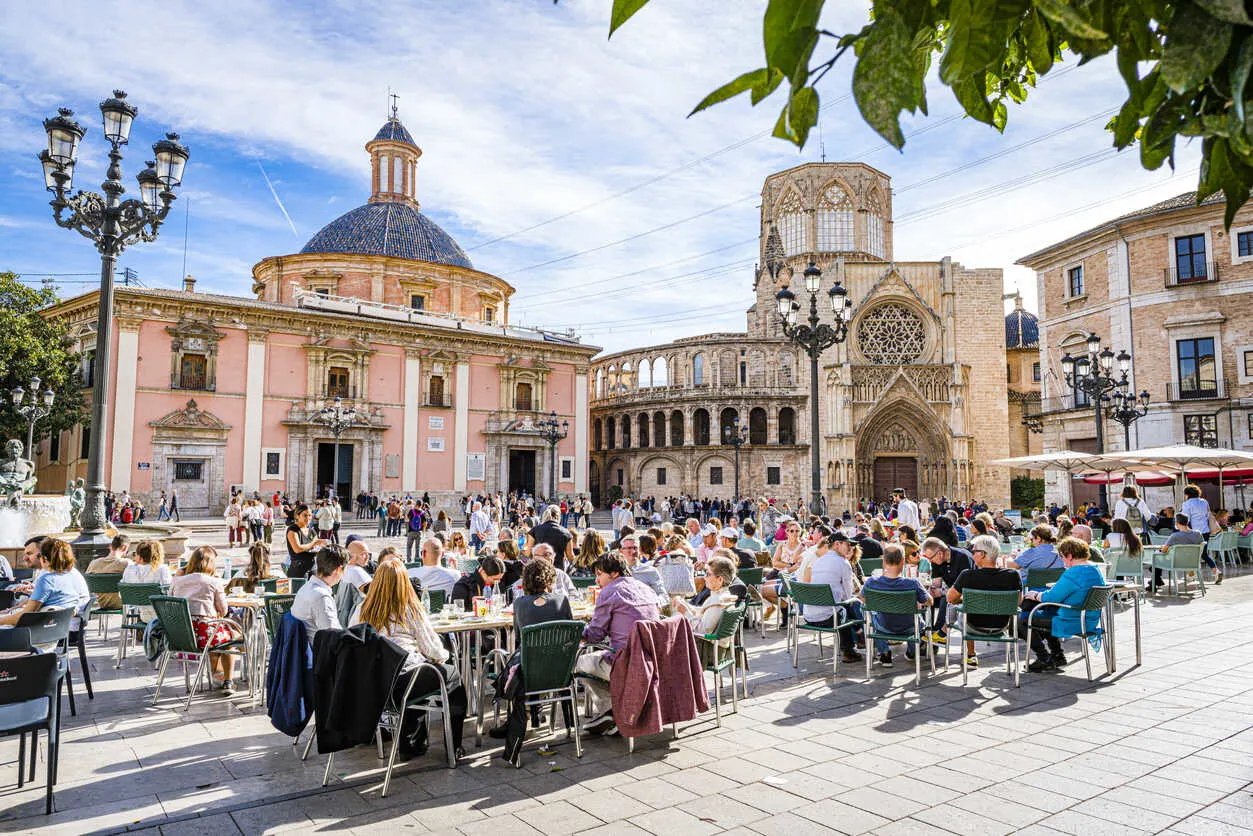Choosing a retirement destination involves balancing lifestyle, cost of living, and, crucially, healthcare accessibility. For many expats, the assurance of high-quality, affordable healthcare is paramount.
Measuring the quality of healthcare is difficult, and it’s hard to put a number on it. We can, however, put a number on the price of medical procedures. And these costs (as well as quality) helped us score each country.
The five finalists below all have something in common: they offer expats consistent and affordable medical care across both public and private sectors.
From France’s comprehensive public system to Costa Rica’s strong network of private and public healthcare facilities, each of these countries provides unique benefits tailored to expat needs. In-depth insights from our correspondents living in these countries reveal why each healthcare system excels in quality, accessibility, and affordability.
The World’s Best Retirement Havens for 2025
The World’s Best Retirement Havens for 2025
20 Countries Compared, Contrasted, Ranked, and Rated. You don’t have to be rich to enjoy a pampered retirement, you just need to know where to go. With our 34th Annual Global Retirement Index, our experts hand you a detailed roadmap. Details—and a Special Offer—Here

By submitting your email address, you will receive a free subscription to IL Postcards and special offers from International Living and our affiliates. You can unsubscribe at any time, and we encourage you to read more about our Privacy Policy.
5. Italy

By Chip Stites
When you think of Italy, healthcare might not be the first thing that comes to mind. But for anyone who has lived in or even visited the country, it quickly becomes a crucial aspect of life. Ranked as one of the top healthcare systems globally by the World Health Organization, Italy offers high-quality care through its dual public and private systems.
Italy’s public healthcare system, Servizio Sanitario Nazionale (SSN), is comprehensive, covering everything except dental and routine eye care. After six months of residency, expats can enroll by visiting their local health center. Once registered, you’ll be assigned a primary physician who acts as your gateway to the system, providing referrals and prescriptions.
For just €387.84 (around $854) annually, we’ve enjoyed extensive coverage. Over seven years, we estimate saving more than $250,000 in healthcare costs. This includes three major surgeries and long-term post-operative care. Despite these significant medical interventions, our out-of-pocket expenses have been minimal. For example, after one major surgery, our follow-up costs, including vitamins and self-administered shots, totaled less than $400.
This cost-effectiveness isn’t unique to my experience. Cindy Sheahan, an American expat living in Italy, shares how affordable and accessible healthcare transformed her outlook. After breaking her foot in a medieval hilltop village, Cindy paid less than $300 for multiple X-rays, orthopedic consultations, and a walking boot. “The care I received was excellent, and the cost was a fraction of what I would have paid in the U.S.,” she says. Even when incorrectly charged as a tourist, the expenses remained far below American prices.
The cost savings extend beyond routine care. I’ll never forget receiving a full-body MRI for only $40 or paying just $5 after an ER visit that included IV fluids, medications, three X-rays, and consultations with multiple specialists. Cindy echoes this affordability across Europe. In Istanbul, she paid $30 for an eye exam and treatment, while in France, a pharmacist consultation and medication for a UTI totaled just $32. In the U.S., similar care would have cost significantly more, requiring additional appointments and higher-priced prescriptions.
While the public system is robust, it can come with long wait times for non-urgent procedures or specialist appointments. That’s where Italy’s private system shines. For those willing to pay out of pocket, private care offers faster access to services. For instance, when faced with a two-month wait for a diagnostic test in the public system, I switched to private care and received the test within a week, paying between $40 and $100. This balance between public and private care ensures expats can tailor their healthcare to their needs and timelines.
Even more complex procedures are surprisingly affordable in the private system. During COVID, I needed two operations for kidney and bladder stones. The total cost for both surgeries—including 12 days in the hospital, all tests, and post-operative care—was just over $14,000. Compared to the U.S., where similar procedures could easily cost three to four times as much, this is a fraction of the price. Cindy highlights similar affordability with prescription medications, often paying 10 to 20 times less than what they cost in the U.S. She recalls a friend who purchased a 10-month supply of gastrointestinal medication in Portugal for $300—the same price as one month’s supply in the U.S.
Despite minor inconveniences, such as occasional wait times in the public system, the overall quality of care in Italy has been exemplary. The doctors, nurses, and support staff are compassionate and highly skilled. From routine check-ups to life-saving surgeries, we’ve been consistently impressed with the professionalism and thoroughness of the healthcare providers here. Cindy agrees: “Don’t let concerns about healthcare stop you from living abroad. Costs are lower, care is top-notch, and medicine is far more affordable.”
Living in Italy has given us peace of mind, knowing we have access to world-class healthcare without the financial strain. Whether navigating the public or private system, the level of care and affordability make Italy a standout choice for anyone considering life abroad.
For a more detailed look at healthcare in Italy, check out Healthcare in Italy.
4. Spain

By Cepee Tabibian
Spain’s healthcare system is globally recognized for its quality, transparency, and affordability, making it a top choice for expats. According to the World Health Organization, Spain ranks as one of the top ten healthcare systems in the world, which should give you some peace of mind for anyone considering moving here.
Spain offers both a tax-funded public system and an affordable private sector, ensuring that expats can access essential medical care without prohibitive costs. Spain’s public healthcare system is accessible to residents on long-term visas who contribute to taxes. However, many expats choose private health insurance for greater flexibility and ease of access. Private insurance in Spain can start as low as €65 per month, covering routine check-ups, doctor visits, and preventive care. Private care allows expats to choose their preferred doctors and hospitals, offering control over healthcare decisions and often providing shorter wait times.
Coming from the U.S., where health insurance is notoriously expensive, I was pleasantly surprised by the affordability and quality of private health insurance in Spain. Plans start as low as €65 per month for excellent coverage, with more comprehensive options typically maxing out around €150. This is a fraction of what many Americans pay, and in Spain, you get incredible value for your money. The quality of care is outstanding, with private hospitals often boasting top-notch facilities and offering a more comfortable experience compared to the public system.
Many private health insurance companies in Spain offer user-friendly online platforms that make it easy to manage appointments, prescriptions, and more. This level of convenience is something I found lacking in the U.S. healthcare system. And for expats concerned about language barriers, private healthcare usually has better access to English-speaking doctors.
Spain has adapted to meet the needs of its growing expat population, especially in regions popular among internationals. Private clinics frequently offer English-speaking doctors, while many providers also support multilingual services, which eases communication for non-Spanish speakers. Spain’s healthcare system also provides online platforms for managing appointments and prescriptions, creating a seamless experience for expats managing their healthcare needs.
My personal experience with healthcare in Spain has been overwhelmingly positive, especially when it comes to transparency and ease of navigating the system. One of the first things I noticed was no more surprise bills, which has been a game changer for me. In the U.S., I often left doctor's offices clueless about the bills that would arrive later—bills that often were hundreds of dollars for services I didn’t even know were out of network or not covered. In Spain, I feel a sense of peace knowing exactly what my monthly plan costs are, and any additional co-pays, which are rare, are typically between €5 and €30. That’s a surprise I can handle.
In the U.S., I used to dread the entire process of going to the doctor—just finding a primary care doctor was a headache—which led me to avoid it altogether. In Spain, I feel empowered to take charge of my health, making appointments for routine check-ups or consultations without stress.
For a more detailed look at healthcare in Spain, check out Healthcare in Spain.
How To Move Out of the U.S.
How To Move Out of the U.S.
The policy implications of the last election impacted your retirement funds, taxes, healthcare, and more. But you can protect yourself, your family, your future. In lots of safe, warm, friendly spots abroad, you can live comfortably on a budget from $2,000-$3,800 a month (all-in—housing and extras included). We’ll show you how—and where—to go.

By submitting your email address, you will receive a free subscription to IL Postcards and special offers from International Living and our affiliates. You can unsubscribe at any time, and we encourage you to read more about our Privacy Policy.
3. France
By Tuula Rampont

Healthcare in France is high-quality and low cost, making it especially attractive for expats and retirees. Coming from the United States, it’s completely revolutionized how I feel about my health and significantly reduced my stress levels. Since you don’t have to join any networks, and no one can be denied on the basis of pre-existing conditions or age, it feels like a big weight has been taken off my shoulders.
Expats in France are eligible for public healthcare after obtaining a Long-Stay Visa, a straightforward process that grants them access to the national healthcare program. Doctor visits are highly affordable, costing around $27, with residents typically paying just $9 out-of-pocket after a standard 70% government reimbursement. The stability in pricing has been remarkable; these rates have been consistent for over a decade, ensuring affordability and financial predictability for residents.
A significant benefit of healthcare in France is its flexibility and ease of access to specialized care. Unless you are going in for a specific procedure, or your doctor has ordered a test like an MRI, there are not excessive wait times to see a doctor. I can’t count the number of times that I’ve felt sick and been able to see my general practitioner the same day, or the following day, at the latest. It’s a very caring system. It’s based on a social safety net and you really feel like the system is looking out for you.
The Doctolib platform, a user-friendly online scheduling tool, allows residents to find and book appointments with doctors across the country, often with little wait time. I had a complicated dental issue and discovered a specialist dentist at the teaching hospital in Marseille, just a 45-minute drive from our home. I managed to book an emergency appointment within two days. Similarly, when I needed treatment for tendinitis in my ankle, I was able to consult with one of the top specialists in the country—who practices in the south of France, Corsica, and Paris—simply by using the Doctolib app to access his appointment calendar online.
Another outstanding feature of French healthcare is their policy on long-term illnesses. Anyone who has cancer, recurrent ulcers, heart disease, certain forms of diabetes, Parkinson’s disease, Alzheimer’s (and a host of other illnesses) is eligible for 100% coverage on healthcare services for the duration of the treatment.
Patients only need to ask their general practitioner to submit a form for long-term coverage. A list of long-term illnesses covered under the French system can be found on the official healthcare website.
For a more detailed look at healthcare in France, check out Healthcare in France.
2. Costa Rica

By Bekah Bottone
Costa Rica’s healthcare system is a recognized leader in Latin America, offering expats reliable care through both public and private systems. The public Caja Costarricense de Seguro Social, known as Caja, is mandatory for residents and is based on reported income, typically costing between 8% and 12% of one’s income. This system provides access to essential healthcare services at little to no additional cost, making it an appealing option for retirees.
The private healthcare system in Costa Rica provides expats with quick access to specialized care, particularly in major cities like San José, where private facilities are modern and well-equipped. Many Costa Rican physicians have trained in the U.S. or Europe, ensuring that private care aligns with international standards. Private insurance plans are affordable, and many expats choose to self-insure, as private treatment costs are low compared to those in North America.
Medismart, a healthcare discount program, offers even more affordability for routine exams and procedures. For just $15 monthly, Medismart provides access to discounted rates on a range of services, making it a convenient option for retirees on a budget. Coverage costs me less than $15 a month, and the savings on medical services are significant. For instance, a dermatologist check-up that would typically cost $100 was only $50 with Medismart. I also received cryotherapy, where the dermatologist treated six spots for an additional $40. Over the past year, I paid just $50 each for a mammogram and an ultrasound. The low monthly fee is well worth it for these discounted routine exams, ensuring I can stay on top of my health without breaking the bank.
Costa Rica’s healthcare offerings extend to smaller towns, though public hospital wait times in rural areas can be longer. Many expats opt for private care, particularly in urgent cases, to ensure timely access to needed services. However, the public system has a robust emergency response structure, and expats in smaller towns report satisfactory care for non-urgent needs.
Costa Rica has also become a top destination for medical procedures that may not be covered by insurance or elective procedures. Over 70,000 foreign medical tourists annually come to Costa Rica for weight loss procedures like lap bands, knee and hip replacements, cosmetic procedures like facelifts, angioplasty, heart valve replacements, and much more.
For a more detailed look at healthcare in Costa Rica, check out Healthcare in Costa Rica.
1. Portugal

By Terry Coles
One of the biggest draws to life in Portugal is the quality and affordability of its healthcare system. As an expat, I have access to both public and private healthcare, along with reasonably priced private insurance. Most expats, like us, choose private insurance because it provides access to top-notch care while avoiding the longer wait times that can sometimes occur in the public system.
Even without insurance, visiting an English-speaking doctor in the private system typically costs between $65 and $145 per visit. However, with our insurance, we pay just $17.50 per appointment. For my husband and me, our private insurance costs around $550 a month, which also includes coverage for up to 60 days of travel outside Portugal. Compared to what we were paying in the U.S., this is an incredible deal.
Portugal’s public healthcare system, Serviço Nacional de Saúde (SNS), covers most essential medical services for free, with small copays for non-essential treatments. If you call an ambulance, you’ll be taken to the nearest public hospital, where care is adequate but not as specialized or streamlined as in private facilities. While the public system works well for emergencies, many expats prefer the private system due to shorter wait times and the ability to choose English-speaking doctors.
In Portugal, most doctors work within hospital networks rather than private practices as in the U.S. This setup makes accessing specialized care straightforward. Specialists such as gynecologists, cardiologists, and dermatologists often have offices within hospital complexes. Booking appointments is easy—you can call a dedicated English-speaking hotline or book online.
In the six years we’ve lived in Portugal, we’ve been consistently impressed with the care we’ve received. Doctors here take their time, nurses are compassionate, and the overall standard of care surpasses what we experienced in the U.S.
One standout moment was during my husband’s ophthalmology appointment. I mentioned that I’d been wearing hard contact lenses since I was eleven and was hoping to get cataracts so I could switch to implanted lenses. To my surprise, the doctor said, “Why wait? You can have the surgery now, and your insurance will cover it.” A few months later, I had the procedure, and the total cost to us was just $750.
Another time, I needed surgery on a toe I had broken but neglected to treat. The podiatrist performed the procedure in his clinic, using local anesthesia, and I watched the whole thing on a monitor. The total cost, including follow-up care and a walking sandal, was $1,500.
Every time we visit the pharmacy, Clyde laughs at how little we spend. For instance, I use Prolia, an injectable medication for osteoporosis. With a prescription, I pay $66 per injection—or $200 without. In the U.S., that same drug costs $1,786 per shot. Clyde takes Edoxaban, a blood thinner, for $22 a month with a prescription, or $70 without. In the U.S., a one-month supply costs anywhere from $350 to $466. Some medications, such as insulin, are even provided for free through the public system.
Portugal also offers world-class specialized treatment. In Lisbon, the Champalimaud Clinic, a leading cancer research and treatment facility, has saved the lives of several friends. Another standout facility is the Campus Neurológico Sénior in Torres Vedras, which specializes in Parkinson’s and Alzheimer’s care. Friends who’ve used these services have nothing but praise for the level of care they received.
Living in Portugal has been transformative, especially in terms of healthcare. We’ve not only saved thousands of dollars but also gained peace of mind knowing we’re in a country where quality medical care is both accessible and affordable.
For a more detailed look at healthcare in Portugal, check out Healthcare in Portugal.
How To Move Out of the U.S.
How To Move Out of the U.S.
The policy implications of the last election impacted your retirement funds, taxes, healthcare, and more. But you can protect yourself, your family, your future. In lots of safe, warm, friendly spots abroad, you can live comfortably on a budget from $2,000-$3,800 a month (all-in—housing and extras included). We’ll show you how—and where—to go.

By submitting your email address, you will receive a free subscription to IL Postcards and special offers from International Living and our affiliates. You can unsubscribe at any time, and we encourage you to read more about our Privacy Policy.
